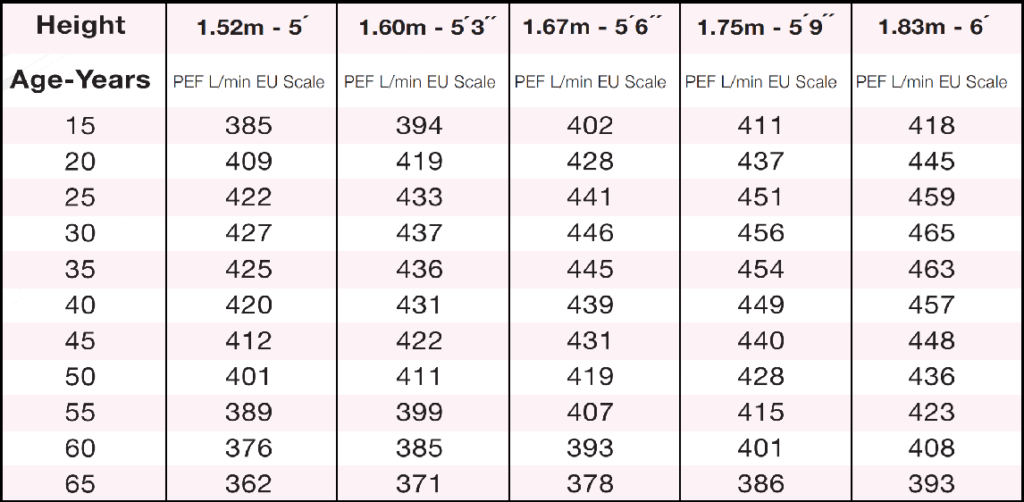
Peak Expiratory Flow (PEF) is an important measure for determining respiratory health. The test is simple and can be done at home, with devices costing as little as £10.
What is Peak Expiratory Flow?
Peak Flow is a measure of the maximal speed at which you can empty air from your lungs. This makes it a good measure of lung function and strength. The test involves a single, forceful breath into a handheld device and is often used by asthmatics to monitor their condition. The units are L/min, which is litres of air per minute.
At the end of this article you will find normative charts to compare your score.

How To Measure Peak Flow
Measuring peak flow at home is very simple:
- The test is best performed standing or sitting upright
- Don’t test soon after a large meal or a bout of exercise
- Relax, take a large breath in, seal your lips over the tube and blow out as hard as you can. The goal is to empty your lungs as fast as possible.
- To check consistency, you can rest for a minute and repeat the test several more times
Below you will find a short video demonstration involving a digital Peak Flow Meter.
What Do My Results Mean?
Your score is assessed under the context of age, height and sex. Normal values are higher the taller you are, men score higher than women, and the peak age is 30 to 35. Here are some data tables to assess your own score.


If you are significantly below the normal value for your age, height and sex, it may be worth speaking to your GP. Otherwise, the higher your score the better and more efficient your lungs are, which may reflect your cardiovascular fitness.
Once you know your personal baseline, it then becomes more important to compare your scores relative to that. This is especially relevant if you are monitoring a respiratory problem. By tracking changes you can monitor lung function over time, identify triggers that worsen symptoms and assess the effectiveness of therapies designed to improve lung health.
For those with respiratory problems, it’s common to measure twice a day, in the morning and evening. Scores less than 80% of your best may be cause for concern and you should speak to your GP or asthma nurse. For healthy individuals, measuring once a year is sufficient, assuming you don’t develop any breathing related symptoms.

